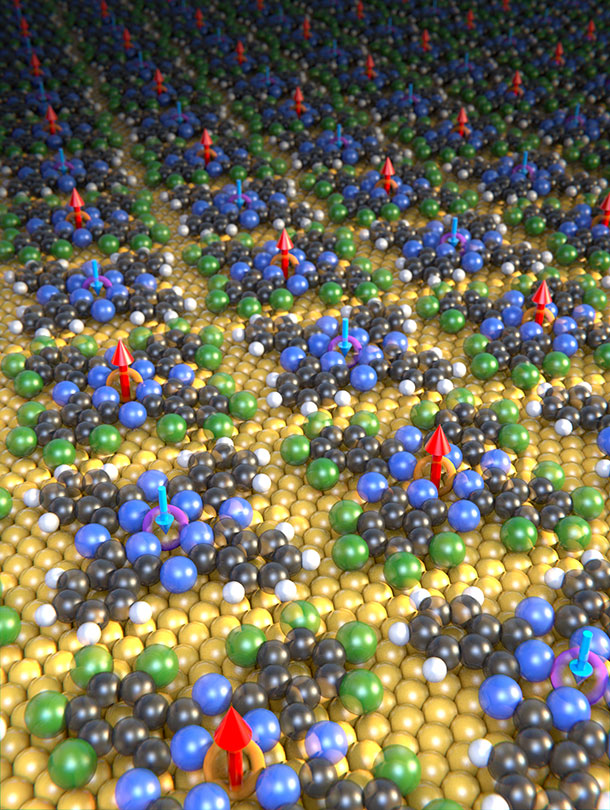
Phthalocyanines with iron (orange) and manganese (violet) centers co-assemble on a gold surface into a checkerboard pattern. The magnetism of iron and manganese differs in strength and points in opposite directions (red and blue arrows), fulfilling the prerequisites for extremely, atomically thin ferrimagnets. Image: University of Basel, Department of Physics
Researchers have developed a new magnetic material that is showing promise for future quantum technologies.
A team led by the University of Basel in Switzerland have developed a wafer-thin ferrimagnet where molecules with different magnetic centers arrange themselves on a gold surface to form a checkboard pattern, which could be used for data storage devices or in quantum computers.
Ferrimagnets—composed of two centers that are magnetized at different strengths and point in different directions—are utilized for data storage or quantum computers because the 2D arrangement allows the magnification state of the individual atoms or molecules to be selected.
The researchers developed phthalocyanines—hydrocarbon compounds with different magnetic centers composed of iron and manganese—that when applied to a gold surface, arrange themselves into a checkerboard pattern where the molecules with iron and manganese centers alternate, proving that the surface is magnetic.
“The decisive factor of this discovery is the electrically conductive gold substrate, which mediates the magnetic order,” Jan Girovsky, Ph.D., from the Paul Scherrer Institute and lead author of the study, said in a statement. “Without the gold substrate, the magnetic atoms would not sense each other and the material would not be magnetic.”
The researchers conducted the experiments at various temperatures, proving that the strength of the magnet couples in the new magnetic material.
They then confirmed the effect using model calculations and indicated that special electrons attached to the surface in the gold substrate are responsible for the magnetism.
“The work shows that a clever combination of materials and a particular nanoarchitecture can be used to produce new materials that otherwise would be impossible,” professor Nirmalya Ballav, of the Indian Institute of Science Education and Research in Pune, India, said in a statement.
According to the study, realization of long-range magnetic order in surface-supported two-dimensional systems has been challenging, mainly due to the competition between fundamental magnetic interactions as the short-range Kondo effect and spin-stabilizing magnetic exchange interactions.
The study was published in Nature Communications.




